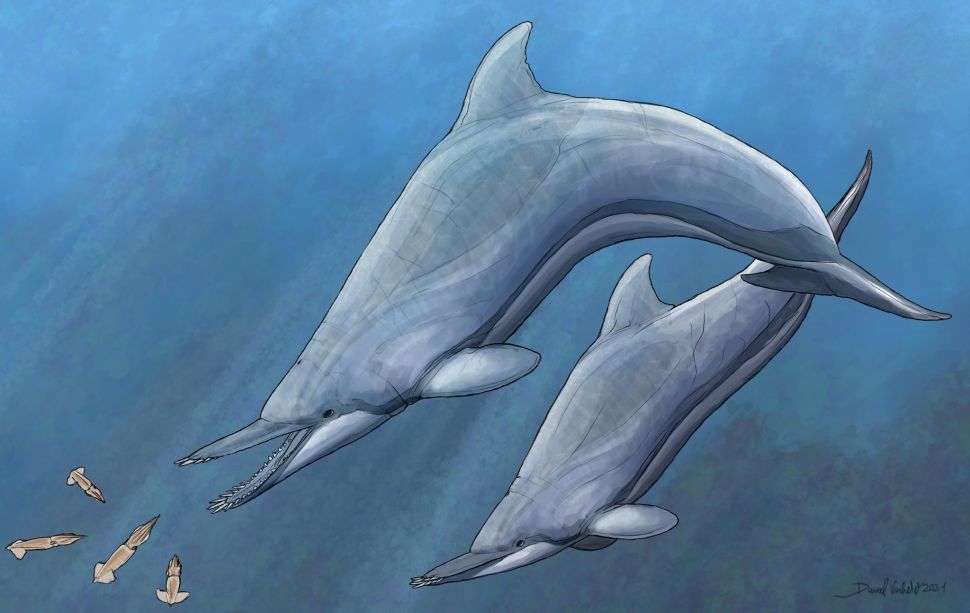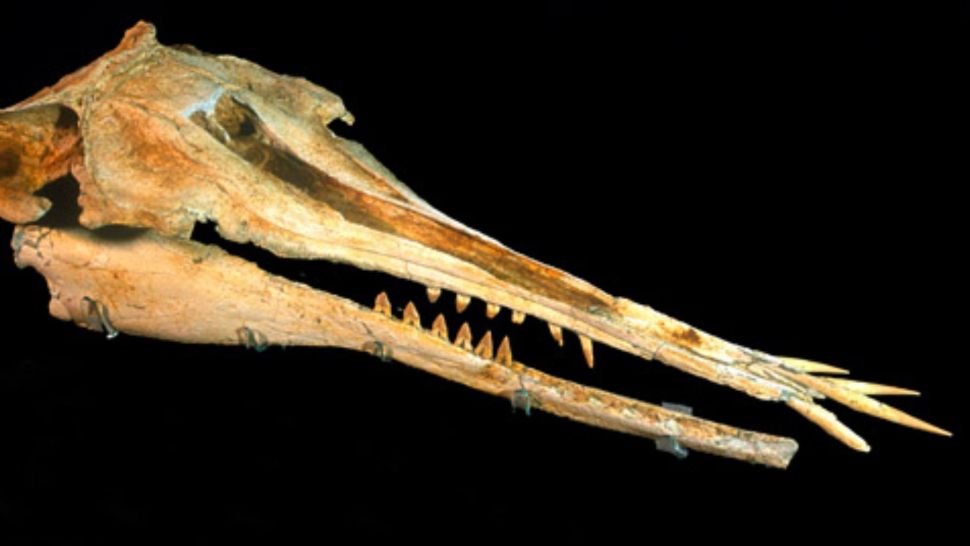Scientists speculate that Nihohae matakoi, the newfound creature, harnessed its distinct horizontal teeth to deliver precision strikes on prey, executing a remarkable hunting strategy before swiftly consuming its catch.
In a stunning revelation, a mysterious predatory dolphin, adorned with long, dagger-like teeth, emerged from the shadows of a New Zealand museum collection, unveiling a prehistoric secret dating back 25 million years.
Dubbed Nihohae matakoi, a name echoing “slashing teeth, face sharp” in Maori, this enigmatic creature’s near-intact skull, discovered on the South Island’s cliff face in 1998, has stirred the curiosity of researchers.
Measuring a formidable 2 feet (60 centimeters), the skull exhibits an intriguing dental arrangement – vertical teeth near the face, seamlessly transitioning into flat, elongated teeth jutting out almost horizontally at lengths ranging from 3.1 to 4.3 inches (8 to 11 cm).
Astonishingly, these peculiar teeth, lacking interlocking patterns, defy the conventional fish-catching role, as evidenced by minimal wear and tear.
Ambre Coste, the research trailblazer from the University of Otago, emphasizes the skull’s exceptional preservation, sparking a cascade of questions.
As scientists delve into the archives of sawfish behavior for clues, the purpose behind these spade-like teeth remains an unsolved riddle from the depths of prehistoric marine realms.

Embarking on a journey through the aquatic mysteries of the past, the discovery of Nihohae matakoi, a 25-million-year-old enigmatic dolphin, opens a portal to the unconventional. Residing in a New Zealand museum collection, its near-complete skull has sparked a cascade of questions for intrepid researchers.
In the realm of the unusual, juvenile sawfish, resembling underwater chainsaws, serve as an unexpected guide. A 2012 Current Biology study unveils their distinctive “thrashing” technique, wielding their teeth like aquatic weapons. Could N. matakoi, with its parallel dental oddity, have orchestrated a similar aquatic ballet?
The intrigue deepens as researchers scrutinize N. matakoi’s cervical vertebrae, revealing unfused neck bones that defy the norms of contemporary dolphins, endowing it with an unparalleled range of neck motion.
Yet, the story unfolds further. The teeth, remarkably pristine, betray a culinary preference, steering clear of hard-boned or scaled fish. Instead, the ancient dolphin might have preferred a delicate menu of soft-bodied delicacies like squids and octopuses.
The script takes an unexpected turn with speculation about the teeth’s potential roles beyond dining – perhaps a dance of social dynamics or a symphony of aquatic courtship. The study acknowledges the challenge of putting such theories to the test.
This odyssey into the past, chronicled in the Proceedings of the Royal Society B on June 14, beckons explorers to venture deeper into the evolutionary tapestry of these peculiar teeth, unraveling their enigmatic recurrence across diverse animal realms.
